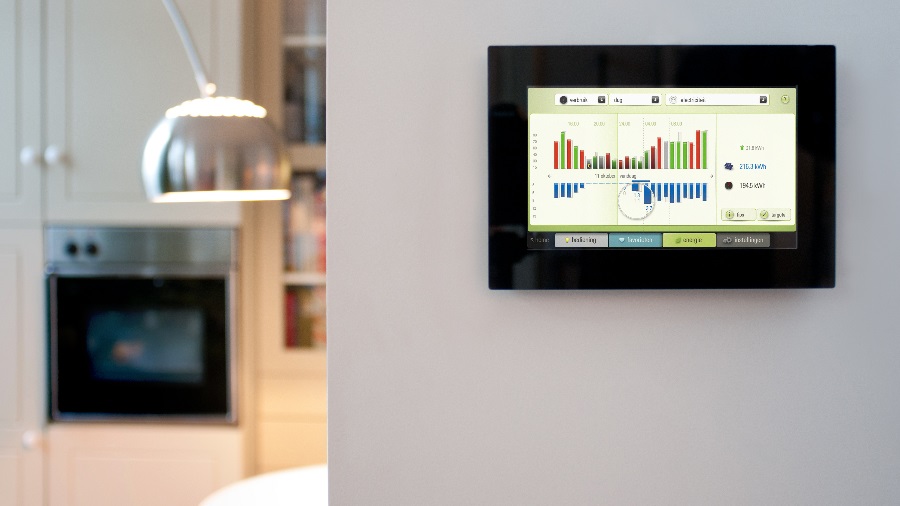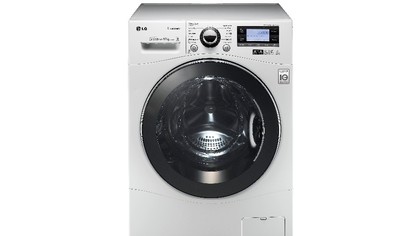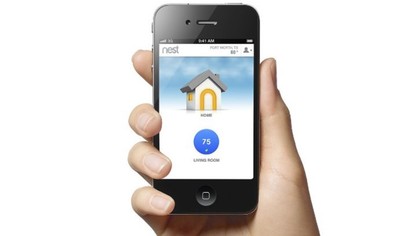The Internet of Things: how it'll revolutionise your devices
Interconnected devices set to alter our perceptions of reality

Forget the cliché idea of fridge that sends you a text when you run out of milk. Try one that senses what's inside, chooses your next fortnight's meal plans, order what it needs via an online supermarket, and syncs a delivery slot with your Gmail calendar.
You might have a smart TV and you've almost certainly got a smartphone, perhaps even one that syncs content to an iPad, but such 'smart' devices are just the beginning of what's loosely termed the 'Internet of Things', or IoT for short. Also (perhaps more correctly) called 'machine to machine', the IoT isn't owned or controlled by any one group or company, comprises no single idea, and it certainly isn't on any of our gadget wishlists. But it will change all of our lives.
The uses for gadgets that communicate with each other on our behalf are huge and varied. How about a farmer that gets a text if any of his cows – each sporting a wireless sensor – gets sick or pregnant. It already happens, and we're next: pacemakers that feed data through to a GP will be possible, and it could even send a text to relatives if the wearer falls ill.
More likely first uses include prescriptions that automatically get re-ordered and delivered without any need for trips to the doctors or pharmacy, and web-connected scales (Wi-Fi models already exist) monitored remotely by a GP.
Smartphone apps are likely to provide an important window on the world of IoT, but tablets and other devices will also join in. The device itself is immaterial – it's the internet connection that's critical.
Some already use live traffic updates on sat nav devices, but in the future your alarm clock will let you sleep in if your train is delayed, re-arrange a taxi, and even email your boss if you're stuck on a motorway.
Handling repetitive tasks
Though this kind of data has been around for a while, it's not yet been linked, in contrast to home automation; if you have the money, it's already possible to have lights with motion sensors that track your movements, and blinds that slide up and down to help regulate temperature and lighting levels. The intercom that rings your mobile phone, whether you're home or not, has been around a while. Ditto the security camera you can monitor from the other side of the world.
Get daily insight, inspiration and deals in your inbox
Sign up for breaking news, reviews, opinion, top tech deals, and more.
"The IoT is removing mundane repetitive tasks or creating things that just weren't possible before, enabling more people to do more rewarding tasks and leaving the machines to do the repetitive jobs," says Grant Notman, Head of Sales and Marketing at Wood & Douglas, a company that manufactures wireless communications hardware for IoT applications.

What is clear is that there is little point in two gadgets talking to each other if that doesn't bring an advantage to the owner, or some kind of efficiency gain. The IoT on it's own is nothing more than back-office admin.
"The consumer won't be interested in the Internet of Things, just as they are not interested in an Internet of Computers," says Jean-Paul Edwards, Head of Media Futures at global creative media agency Manning Gottlieb OMD London.
"They will be interested in what the IoT allows them to do or what it saves them from doing. Passive environmental monitoring, remote management and connectivity to everything will help us do what we used to do, but faster, cheaper and better."
Could these catch-on? The self-repairing washing machine that can be fixed remotely or at least with only one visit by an engineer who has the correct parts, or the Nest Thermostat that learns when you are in or out to better control home heating.
"The technology is complex," says Edwards of the latter, "but a claimed 20% saving on energy bills is a simple idea." Self-repairing gadgets? Now there's a tasty idea that could take customer service, currently a frustrating blockage in the system, to new heights of efficiency.

Based around embedded RFID chips, barcodes and sensors, the Internet of Things is, at its most impressive, helping create smart cities. The aspects here are endless and begin with banal time saving 'kettle boils when referee blows half-time whistle' activities in homes. However, where the IoT is at its best when predicting human behaviour.
Is a city's free rent-a-bike scheme being used? Stick a RFID chip on the handlebars and someone can plot exactly where those bikes go, when, and who with. At night streetlights could switch on only when a car approaches – thus saving electricity – but more impressively, data could be collected to map urban travel patterns. Cue intelligent traffic lights working with the flow of traffic.
There is a city where a joined-up IoT already exists, albeit in embryonic form. New Songdo City, 40 miles south of Seoul in South Korea, is a super-smart way to use 1500 acres of reclaimed land.
A Cisco-powered concept called U.Life is based on a city wide wired broadband network that allows the current 60,000 residents to use their smartphones, tablets and other touchscreen devices to control their homes' heating, lighting and air-con, with TelePrescence devices throughout the city allow free video calling. Cars talk to roads, which talk to streetlights, while rubbish is sucked away via an underground network of pipes, without the need for dustbin lorries.
The aim is a low energy, incredibly efficient city built with private investment, and there's good reason why it's being seen as a global template; more than half the world's seven billion population now lives in cities, with 6.3 billion predicted to do so by 2050.

"The M2M market is growing rapidly and unlike any other, is one technology that can surpass human interaction," says Macario Namie, VP of marketing at Jasper Wireless, which is working with mobile operators such as O2 in the UK and AT&T in the US on IoT communications. "Its limitless reach means it's set to be prevalent in connecting future societies."
That 'double whammy' of population growth and ever-increasing urbanisation means that the IoT has the job of streamlining our cities, but in theory it will allow each of us to dispense with a lot of daily chores. Of course, that's exactly what said about the home computer.
Jamie is a freelance tech, travel and space journalist based in the UK. He’s been writing regularly for Techradar since it was launched in 2008 and also writes regularly for Forbes, The Telegraph, the South China Morning Post, Sky & Telescope and the Sky At Night magazine as well as other Future titles T3, Digital Camera World, All About Space and Space.com. He also edits two of his own websites, TravGear.com and WhenIsTheNextEclipse.com that reflect his obsession with travel gear and solar eclipse travel. He is the author of A Stargazing Program For Beginners (Springer, 2015),
